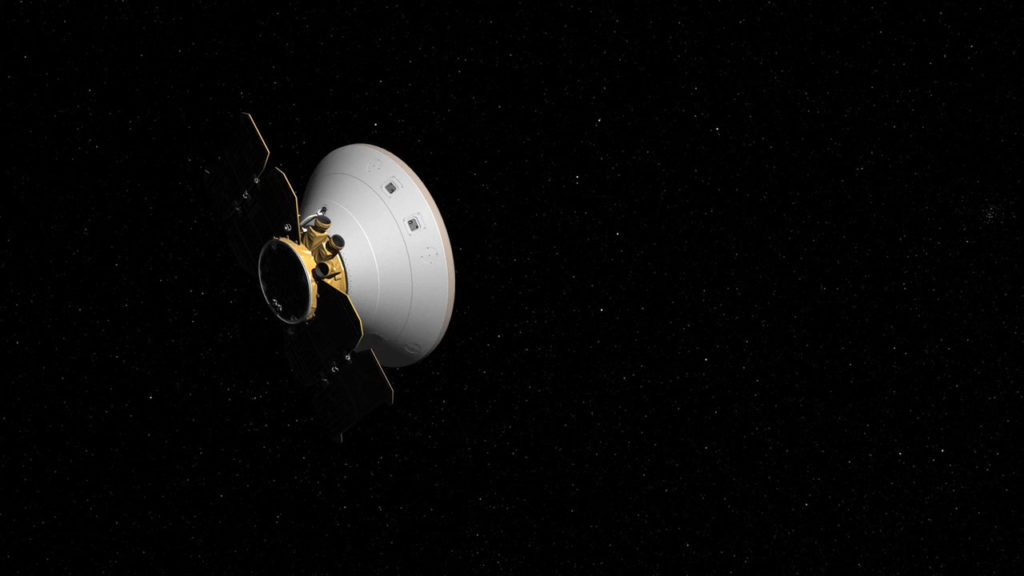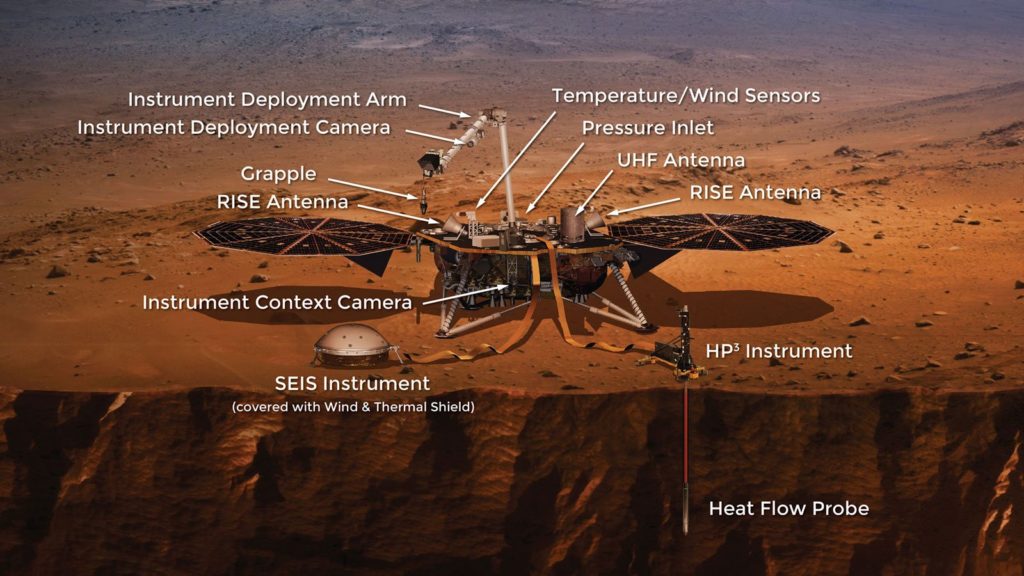 |
|
This artist’s concept
shows the InSight spacecraft, encapsulated in its aeroshell, as it cruises to Mars and Nov. 26, 2018 touchdown at Elysium Planitia. Credits: NASA/JPL-Caltech |
CAPE CANAVERAL, FL
– NASA’s InSight lander marked a major milestone when it cruised past
the halfway point on its interplanetary voyage
enroute to the Red Planet. on the agency’s unprecedented mission to elucidate
the “vital signs” of the Red Planet.
NASA
announced that the InSight spacecraft is healthy and reached the halfway point
to Mars on Aug. 6.
“All
of its instruments have been tested and are working well,” NASA officials
announced.
“As of Aug. 20, the spacecraft had covered 172
million miles (277 million kilometers) since its launch 107 days ago.”
million miles (208 million kilometers) to go before its planned touch down in
Mars’ Elysium Planitia region, where it will be the first mission to study the
Red Planet’s deep interior.
NASA’s
Interior Exploration using Seismic Investigations, Geodesy and Heat Transport
(InSight) Mars mission launched on a United Launch
Alliance Atlas V rocket in the dead of night at 7:05 a.m. EDT (4:05 am PDT) Saturday from
Vandenberg Air Force Base, California.
7 months after liftoff the landing is scheduled for Nov. 26, 2018 at
Elysium Planitia at around
3 p.m. EST (noon PST). The location is about 375 miles away from Gale Crater –
where NASA’s Curiosity rover landed in 2012.
In
the intervening time between launch and landing the team is checking out the spacecraft
and science instruments as well as rehearsing and rechecking all the procedures
for the critical ‘do or die’ landing day and the ‘6 Minutes of Terror’ involving
all phases of Entry, Descent and Landing (EDL).
“InSight’s seismometer, which will be used to
detect quakes on Mars, received a clean bill of health on July 19. The SEIS
instrument (Seismic Experiment for Interior Structure) is a six-sensor
seismometer combining two types of sensors to measure ground motions over a
wide range of frequencies. It will give scientists a window into Mars’ internal
activity,” NASA said in a statement.
“We did our final performance checks on
July 19, which were successful,” said Bruce Banerdt, principal
investigator of InSight from NASA’s Jet Propulsion Laboratory, Pasadena,
California.
“The team also checked an instrument that will
measure the amount of heat escaping from Mars. After being placed on the
surface, InSight’s Heat Flow and Physical Properties Package (HP3) instrument
will use a self-hammering mechanical mole burrowing to a depth of 10 to 16 feet
(3 to 5 meters). Measurements by sensors on the mole and on a science tether
from the mole to the surface will yield the first precise determination of the
amount of heat escaping from the planet’s interior. The checkout consisted of
powering on the main electronics for the instrument, performing checks of its
instrument sensor elements, exercising some of the instrument’s internal
heaters, and reading out the stored settings in the electronics module.”
“The third of InSight’s three main
investigations — Rotation and Interior Structure Experiment (RISE) — uses the
spacecraft’s radio connection with Earth to assess perturbations of Mars’
rotation axis. These measurements can provide information about the planet’s
core.”
cameras as well. They also used the Instrument Context Camera (ICC) to take a 24
second long long-exposure spacecraft selfie inside of the spacecraft’s
backshell.
first glimpse of the heat shield blanket, harness tie-downs and cover bolts is
a very reassuring sight as it tells us our Instrument Context Camera is
operating perfectly,” said InSight Project Manager Tom Hoffman from JPL.
camera will be of the surface of Mars.”
first image of Elysium Planitia minutes after InSight touches down on Mars.
is funded by NASA’s Discovery Program of low cost, focused science missions
along with the science instrument funding contributions from France and
Germany.
Watch for Ken’s continuing coverage of NASA, ULA, SpaceX, Boeing,
Lockheed Martin, Orbital ATK and more space
and mission
reports direct from the Kennedy Space Center, Cape Canaveral Air Force Station,
Florida and Wallops Flight Facility, Virginia.
Stay tuned here for Ken’s continuing
Earth and Planetary science and human spaceflight news: www.kenkremer.com –www.spaceupclose.com –
twitter @ken_kremer – ken at kenkremer.com



